Stomphia didemon Siebert, 1973Common name(s): Orange anemone. Swimming anemone. Apple anemone. |
|
| Synonyms: Actinostola sp. | 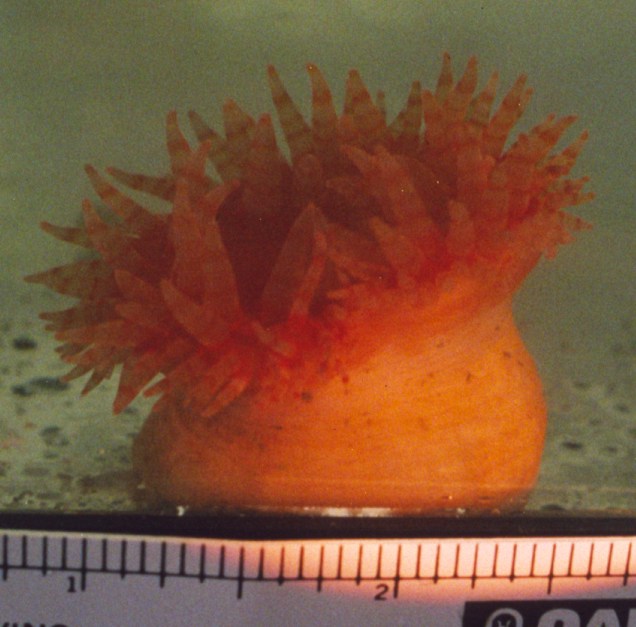 |
| Phylum Cnidaria
Class Anthozoa Subclass Zoantharia Order Actiniaria Family Actinostolidae |
|
| Stomphia didemon, about 3.5 cm diameter and 4 cm tall. Captured by otter trawl at about 90 m depth from San Juan Channel | |
| Photo by: Dave Cowles July 2001 | |
How to Distinguish from Similar Species: Stomphia coccinea has a whitish column with red or orange-red streaks, is not usually more than 3 cm high, and usually is found on horse mussel (Modiolus modiolus) shells. Stomphia sp. has less than 130 tentacles on individuals 5 cm or more tall, and its color is a uniform reddish beige.
Geographical Range: Web sources indicate that it can be found at least in Alaska, British Columbia, and Washington State.
Depth Range: The Monterey Bay Aquarium reports that this species lives from 60-180 m depth (http://www.mbayaq.org/efc/living_species/default.asp?hOri=0&hab=9&inhab=495)
Habitat: In the San Juan channel specimens are often captured from sand/gravel bottoms at about 80-100 m depths. They usually come up not attached to anything, though they will readily attach to a solid object in an aquarium. Perhaps this is because they have a swimming response to predators.
Biology/Natural
History: Little is
known. This is a recently described species. The
spincter of
Stomphia
species in general is strong enough that the upper part of the body can
cover the tentacles (the tentacles can be retracted completely
inside).
This species, as well as Stomphia
coccinea,
are known to detach from the bottom and swim away from predators such
as
the leather star, Dermasterias
imbricata. S. coccinea
is found in northern boreal
waters of the Atlantic and Pacific. Another relative,
S. selaginella,
inhabits McMurdo Sound in Antarctica. Click the
photo below to see a movie of the anemone doing this in our
laboratory.
However, the anemone did not seem to have any reaction in the
laboratory
to the rose star Crossaster
papposus, another star that lives at similar
depths and is often
caught in the same trawls.
On one web site
(http://www.bbc.co.uk/nature/animals/features/292feature1.shtml),
the BBC reports on S. didemon: "When approached by
a predatory leather
star, this anemone, Stomphia didemon, became highly
agitated. It
elongated and swayed from side to side. Then, bending low, it brushed
its
tentacles
over
the leather star. Finally, this normally sedentary animal inflated a
muscular
cone at its base to lever itself free from its moorings and danced away
in the water column."
This species is said to eat small crustaceans.
| Return to: | |||
| Main Page | Alphabetic Index | Systematic Index | Glossary |
References:
Dichotomous Keys:
Kozloff,
1987, 1996
General References:
Lamb
and Hanby, 2005
Web References:
http://www.underwater-photos.com/pw046.html (a photo and short note
on S. coccinea)
http://www.ups.edu/faculty/jkelliott/escape.htm (photos and description
of S. didemon escaping from the leather star)
Scientific Articles:
Dalby, J. Jr., J. K. Elliott, and D. M. Ross. 1988. The swimming response of the actinian Stomphia didemon to certain asteroids: distributional and phylogenetic implications. Can. J. Zool. 66: 2484-2491.
General Notes and Observations: Locations, abundances, unusual behaviors, etc.:
We have usually caught this species by otter trawl in the San Juan Channel north of San Juan Island, using the Friday Harbor Marine Lab vessel
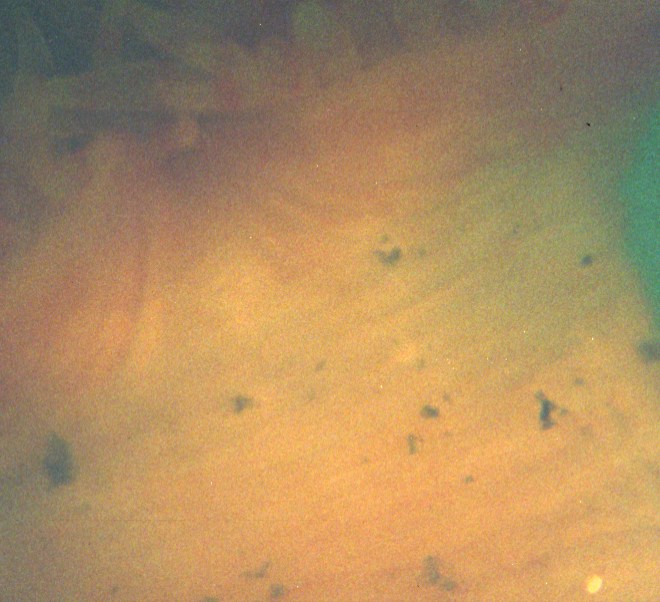
Stomphia didemon's column
wall. This species has no tubercles
or acontia
on
the wall. A few bits of debris may be present but they appear
to
be just loosely attached by mucus.
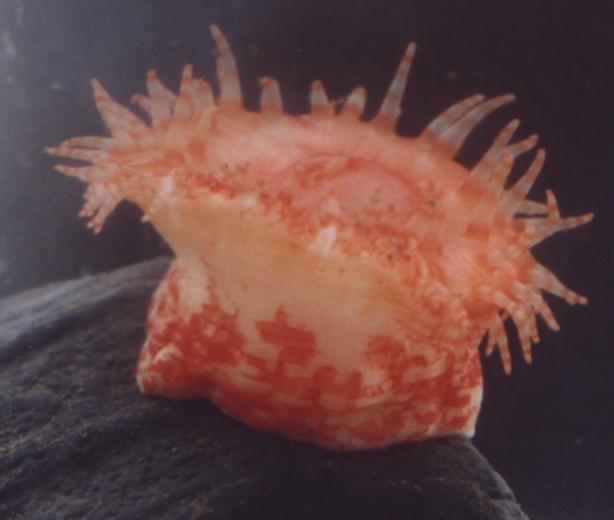
Another individual. Captured 100 m depth, San Juan
Channel.
Photo by Dave Cowles, July 2000
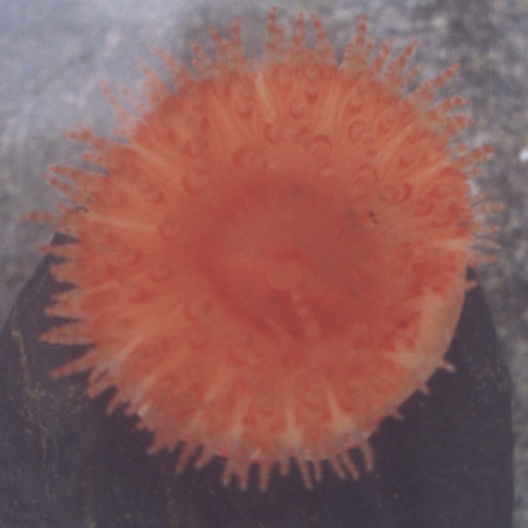
A view of the oral
disk. Photo by Dave Cowles, July 2000
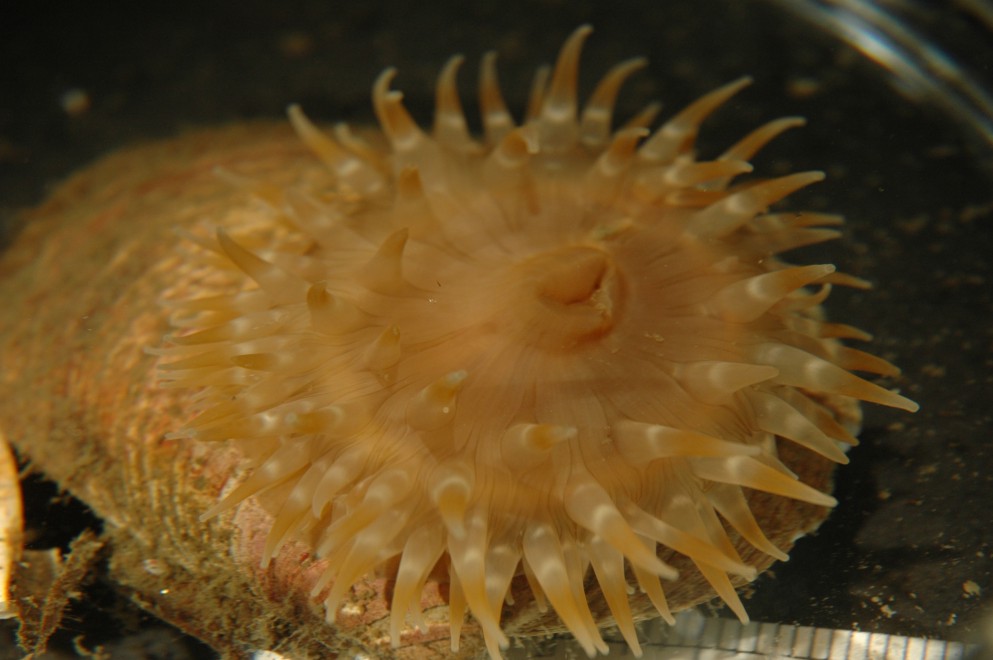
This individual from 100 m, San Juan Channel, is perched on a shell.
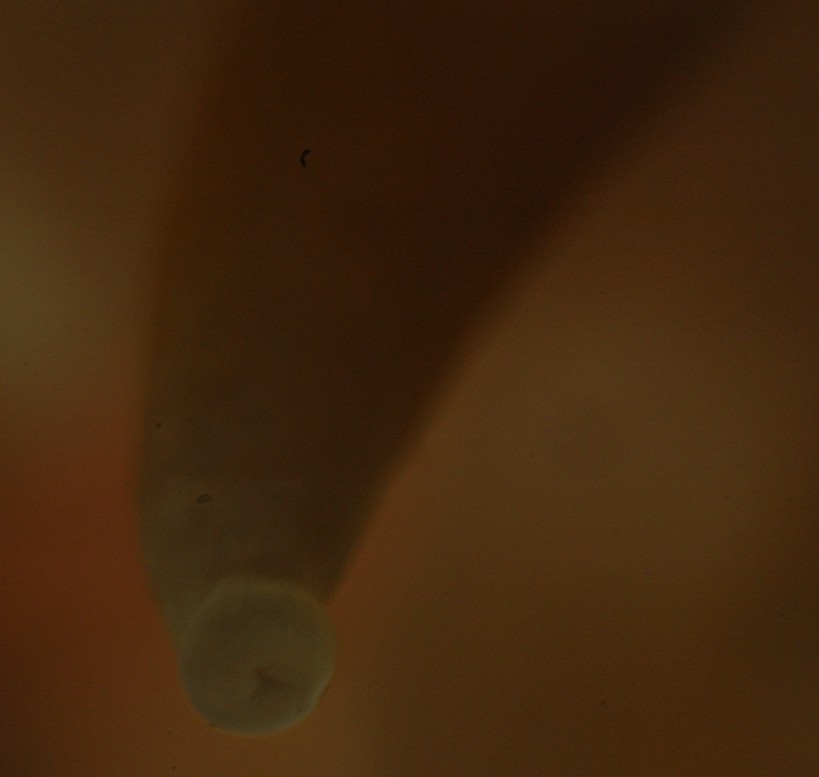
The tentacles
end with a small pore.
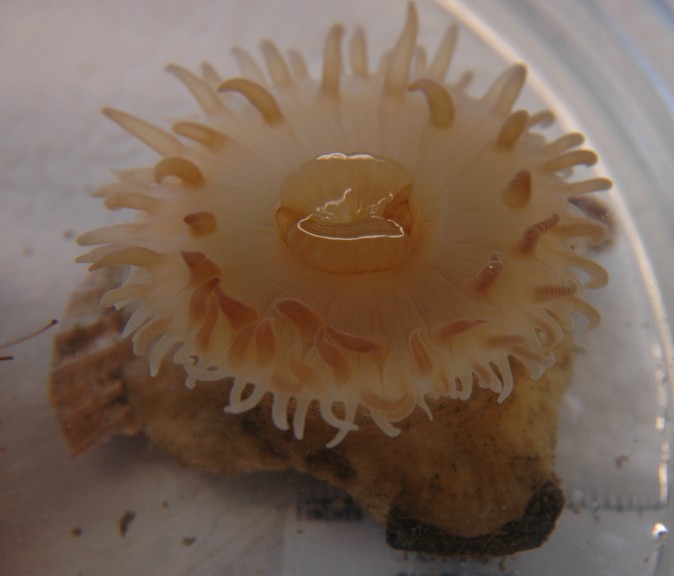
An unusually pale individual.
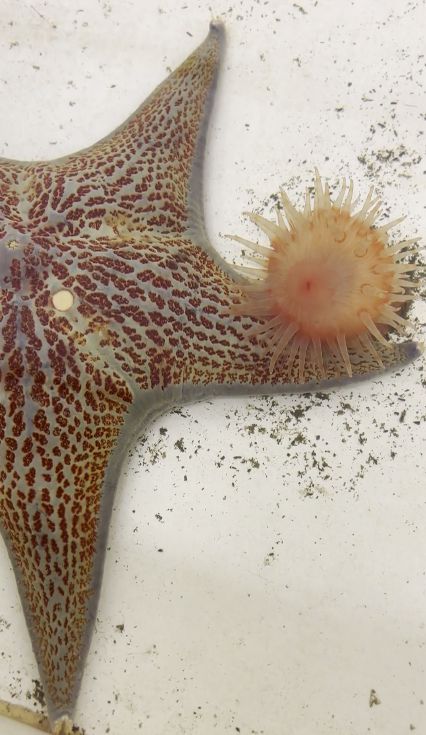 |
| This species does indeed swim when the seastar Dermasterias imbricata encounters it. Click on the photo above to see it in live action. Just before the video started, the Dermasterias seastar was placed near the anemone and began slowly crawling toward it. As the seastar came very close, the anemone first extended its tentacles down and touched the surface of the seastar. About 10 seconds later, just before this video began, the anemone suddenly leaned sharply toward the seastar. Then, as seen in the video, it quickly partially retracted its tentacles, disconnected its foot, and swam away like a contorting umbrella. Photo and video by Abigail Cooley at Rosario Beach Marine Lab, July 2025. |
Authors and Editors of Page:
Dave Cowles (2004): Created original page